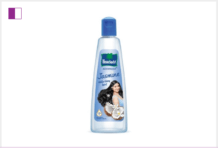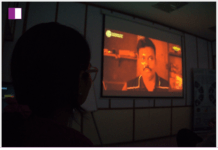Piali Dasgupta, Senior Vice-President – Marketing, Columbia Pacific Communities, writes how one can move away from bland, transactional and formulaic to spruced-up advertising in the real estate space
In many ways, real estate as a category, is no different than any other category. If one really has to break this down, there is a certain consumer, who needs his or her needs and wants to be fulfilled, and there are products that are made available to her to fulfil that need.
Real estate fulfils one of the basic human needs – that of shelter, going by Maslow’s hierarchy of needs. So, in that sense, it’s very primal, universal and all-pervasive. And yet, owning a house is not something that a large percentage of our population can afford, despite the emergence of affordable housing and housing loans.
Many economists have claimed that investing in real estate is one of the worst investments one can make owing to several reasons – liquidation of the property and very high transaction costs being two such. Therefore, millennials and Gen-Z are not too inclined to invest in property. Yes, things have changed to some extent post-COVID, with more people returning to their hometowns availing of work-from-home options and buying houses. But the data worldwide shows that there has been a decline in first-time home buyers.
Given the scenario and the extremely competitive and volatile real estate market, how do brands position themselves differently, break through the clutter, make a long-lasting impression in the minds of the consumers and stay ahead of the curve?
The answer lies in cutting-edge advertising.
Real estate advertising, for decades, has followed a certain formula. And here’s the formula – go big during the time of launching a project – block 360 media (radio, print, out-of-home, digital) and launch with an offer. Make that a limited-period offer. Post that try to increase urgency by communicating the scarcity of inventory, and somehow try to grow enquiries and site visits to push sales in the first three months of the launch.
Real estate advertising has never been known for great storytelling, compelling imagery, exceptional creativity or appealing to the EQ of the consumer. In other words, if you remove the logo from most real estate ads, they would tend to look the same.
But it doesn’t have to be that way. After all, isn’t real estate one of the most expensive investments one makes in one’s lifetime? Isn’t buying a house very much an emotionally charged process and a landmark event in one’s life? Isn’t it a right of passage for a lot of people? A marker of “being settled” for an entire generation of Indians who have been brought up to believe that they must study hard, work hard and then buy a house and a car?
So, why must the codes of communication for this category be so bland, transactional and formulaic?
Here are three ways in which real estate marketing can be spruced up and reimagined:
- Do enough consumer research to glean insights
Most real estate brands don’t spend ample time doing market research. One knows of firms where market research is a bit of an event – and happens once in five years. They may not even invest in research to understand the product-market fit of a specific product about to be launched. This is how a gap in understanding consumer mindsets is created. Consumer behaviour with respect to specific categories changes every few years. Cultural, political and lifestyle influences propel these changes. Without spending adequate time listening to the very people a brand would cater to, how would one mine insights, which is one of the main ingredients of creating effective, compelling communication? I am not saying research always tells the truth. Many brands have gone wrong despite extensive and frequent market research. But it’s certainly an important piece in the puzzle.
- Tell powerful stories
People buy brands, they don’t buy products. And brands are all about stories. They are all about creating a perception in the minds of their consumers by immersing them in a tale that appeals to them. The struggle of the single girl in a big city to rent a flat which makes her consider buying her own house, or the tale of an elderly couple buying a house with their whole lives’ savings, or the reaction of the boy from a humble background when he gets the keys to his own home after spending all his life living in rented houses – these are all great stories. They are real, raw and relatable and underline the RTBs (Reasons to Buy) of this category. Real estate brands shy away from telling these stories resulting in cookie-cutter advertising that is uniform, flavourless and with zero appeal. Most brands don’t need a high-profile celebrity endorsing their products if they get their storytelling right.
- Invest in building trust
Trust is a hugely depleting resource, particularly in high ticket-value categories such as real estate and fine jewellery. In the case of the former, consumers are unsure of investing a large part of their portfolio in a project that is under construction, given that often builders default on the delivery date. The quality of construction and the materials used is another concern. Therefore, real estate advertising needs to be about building trust, equity and credibility more than anything else. And how do you gain trust? By doing more than you promise. Show consumers a track record of ‘on time’ or ‘before time’ delivery. Make that a Communication point. Use images that are as real to the architect’s plan as possible and remove frills. Clearly communicate policies and conditions, instead of putting them in a fine print that is barely legible. Sure, a few real estate brands do create testimonial videos of past and present customers to build credibility. But it’s really about going beyond that, walking the talk, building a culture of transparency and marketing the product in the most honest and earnest way possible.






































